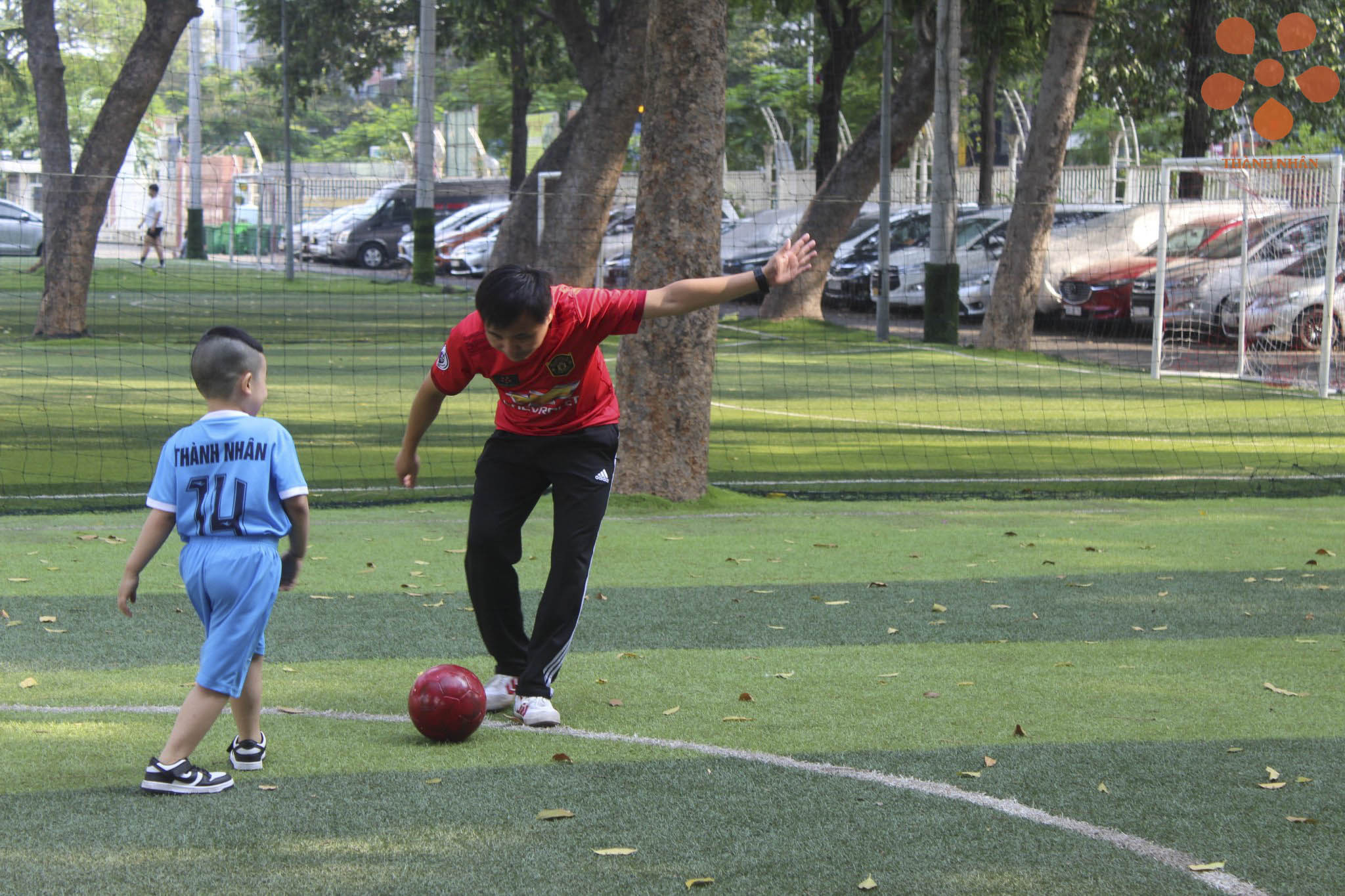Dạy kỹ năng bắt chước cho trẻ thông qua bóng đá: Một phương pháp tiếp cận khả thi
Dạy kỹ năng BẮT CHƯỚC cho trẻ có nhu cầu đặc biệt thông qua bóng đá: Một phương pháp khả thi
CÁC NGHIÊN CỨU LIÊN QUAN
1. Stone, W. L., Lemanek, K. L., Fishel, P. T., Fernandez, M. C., & Altemeier, W. A. (1990). Play and imitation skills in the diagnosis of autism in young children. Pediatrics, 86(2), 267-272.
2. Dawson, G., & Adams, A. (1984). Imitation and social responsiveness in autistic children. Journal of abnormal child psychology, 12, 209-226.
3. Ingersoll, B. (2008). The social role of imitation in autism: Implications for the treatment of imitation deficits. Infants & Young Children, 21(2), 107-119.
4. Stone, W. L., Ousley, O. Y., & Littleford, C. D. (1997). Motor imitation in young children with autism: What’s the object?. Journal of abnormal child psychology, 25, 475-485.
5. Ingersoll, B. (2008). The effect of context on imitation skills in children with autism. Research in Autism Spectrum Disorders, 2(2), 332-340.
6. Rogers, S. J., Cook, I., & Meryl, A. (2005). Imitation and Play in Autism.
7. Ingersoll, B., & Gergans, S. (2007). The effect of a parent-implemented imitation intervention on spontaneous imitation skills in young children with autism. Research in developmental disabilities, 28(2), 163-175.
8. Jones, V., & Prior, M. (1985). Motor imitation abilities and neurological signs in autistic children. Journal of autism and developmental disorders, 15(1), 37-46.
9. Smith, I. M., & Bryson, S. E. (1994). Imitation and action in autism: a critical review. Psychological bulletin, 116(2), 259.
10. Cardon, T. A., & Wilcox, M. J. (2011). Promoting imitation in young children with autism: A comparison of reciprocal imitation training and video modeling. Journal of autism and developmental disorders, 41, 654-666.
11. Rogers, S. J., Hepburn, S. L., Stackhouse, T., & Wehner, E. (2003). Imitation performance in toddlers with autism and those with other developmental disorders. Journal of child psychology and psychiatry, 44(5), 763-781.
12. Dadgar, H., Rad, J. A., Soleymani, Z., Khorammi, A., McCleery, J., & Maroufizadeh, S. (2017). The relationship between motor, imitation, and early social communication skills in children with autism. Iranian journal of psychiatry, 12(4), 236.
13. Bololoi, D. D., & Rizeanu, S. (2017). Teaching gross motor imitation skills to children diagnosed with autism. Romanian Journal of Psychological Studies (RJPS)–Hyperion University of Bucharest.
14. Zachor, D. A., Ilanit, T., & Itzchak, E. B. (2010). Autism severity and motor abilities correlates of imitation situations in children with autism spectrum disorders. Research in Autism Spectrum Disorders, 4(3), 438-443.
15. Escalona, A., Field, T., Nadel, J., & Lundy, B. (2002). Brief report: Imitation effects on children with autism. Journal of autism and developmental disorders, 32, 141-144.
16. Miller, S. A., Rodriguez, N. M., & Rourke, A. J. (2015). Do mirrors facilitate acquisition of motor imitation in children diagnosed with autism? Journal of applied behavior analysis, 48(1), 194-198.
17. May, T., Rinehart, N., Barnett, L., Hinkley, T., McGillivray, J., Skouteris, H., … & Goldfinch, D. (2018). ‘We’re doing AFL Auskick as well’: experiences of an adapted football program for children with autism. Journal of Motor Learning and Development, 6(1), 130-146.
18. Howells, K., Sivaratnam, C., Lindor, E., He, J., Hyde, C., McGillivray, J., … & Rinehart, N. (2021). Can a community-based football program benefit motor ability in children with autism spectrum disorder? A pilot evaluation considering the role of social impairments. Journal of Autism and Developmental Disorders, 1-12.
19. Lopez-Diaz, J. M., Felgueras Custodio, N., & Garrote Camarena, I. (2021). Football as an Alternative to Work on the Development of Social Skills in Children with Autism Spectrum Disorder with Level 1. Behavioral Sciences, 11(11), 159.
20. Cei, A., & Sepio, D. (2021). A case study of psychological empowerment of three children with Autism Spectrum Disorder (ASD) through football coaching. Int. J. Sport Psychol, 52, 281-302.
21. Sivaratnam, C., Howells, K., Stefanac, N., Reynolds, K., & Rinehart, N. (2020). Parent and clinician perspectives on the participation of children with cerebral palsy in community-based football: a qualitative exploration in a regional setting. International journal of environmental research and public health, 17(3), 1102.
22. Healy, S., Msetfi, R., & Gallagher, S. (2013). ‘Happy and a bit nervous’: The experiences of children with autism in physical education. British Journal of Learning Disabilities, 41(3), 222-228.
23. Davis, P. E., Slater, J., Marshall, D., & Robins, D. L. (2023). Autistic children who create imaginary companions: Evidence of social benefits. Autism, 27(1), 244-252.
Trung tâm Thành Nhân can thiệp cho trẻ theo tiếp cận toàn diện và áp dụng các phương pháp can thiệp dựa trên bằng chứng.

